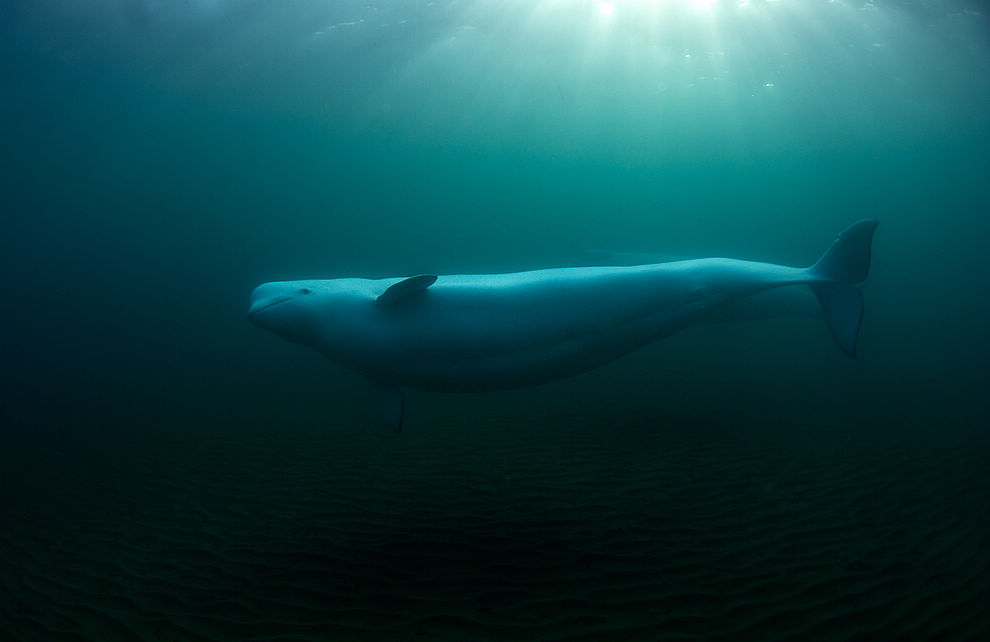First of all we need to know the classification of insects.
Classification of Insects
Taxonomy is the study of the principles of scientific classification. In this page we will learn how insects are classified. First we will see where insects belong in the animal kingdom. Then we will find out how the different insects are sorted in groups.
Use the Glossary to look up some of the technical words or terms.
Classification of animals
界(Kingdon)、门(Phylum)、纲(Class)、目(Order)、科(Family)、属(Genus)、种(Species)
The animal kingdom is divided in a number of groups called “phyla” (singular: phylum). Examples of phyla are:
- Protozoa (single-celled animals)
- Porifera (sponges)
- Nemathelminthes (roundworms)
- Mollusca (mollusks, snails, etc.)
- Arthropoda (crayfish, millipedes, centipedes, spiders and insects)
- Chordata, (fish, amphibians, reptiles, birds, and mammals)
Each phylum is subdivided in classes, for example the class Hexapoda (= insects). Classes are subdivided into orders, for example the order Coleoptera (= beetles). Orders are divided into families, families into genera (singular: genus), and genera are divided into species (See Table 1). Within the class Hexapoda there are over 750,000 different species of insects.
The scientific name of a species is always a double name (the genus name, and a specific name). It should be written with a capital letter in the genus name and either in italics or underlined.
Example: Helicoverpa armigera or Helicoverpa armigera
An example of the classification of an insect:
| Kingdom — Animal |
| Phylum — Arthropoda |
| Class — Hexapoda (= insects) |
| Order — Lepidoptera (= butterflies and moths) |
| Family — Noctuidae (= noctuids) |
| Genus — Helicoverpa |
| Species — Helicoverpa armigera (= American bollworm) |
The phylum Arthropoda
Some characteristics of the Arthropoda are:
- They have a so called exoskeleton. They do not have bones, but the hard outer covering supports the muscles.
- The appendages are jointed.
- The body is formed of a number of segments.
Characteristics of the class Hexapoda (Insects)
Some characteristics of insects are:
Body:
- The body is divided into three distinct regions: head, thorax and abdomen
Head:
- One pair of antennae.
- The antennae are usually used as tactile organs (= organs pertaining to the sense of touch) or as olfactory organs (= organs of smell).
- Eyes:
- Most insects possess one pair of compound eyes and sometimes some simple eyes called “ocelli”.
- Mouthparts.
- There is a big variety in types of mouthparts; biting, sucking, stinging, licking, etc.
Thorax:
- Three pairs of legs.
- The thorax has three segments. These are called pro-thorax, meso-thorax and meta-thorax. Each segment has one pair of legs. The different parts of the leg are called coxa, trochanter, femur, tibia, and tarsus.
Note: some insects are legless, or have fewer than 6 legs. Some larvae have leg-like appendages on the abdomen.
- Often one or two pairs of wings.
- The wings are borne by the second and/or third of the thoracic segments.
Note: Some insects are wingless.
Abdomen:
- The gonopore (genital opening) is at the posterior end of the abdomen.
- No appendages used for moving on the abdomen of adults (except in a few primitive insects).
- Sometimes there are some appendages at the end of the abdomen.
Classification of Hexapoda (Insects)
The class hexapoda is divided in two subclasses:
- Apterygota (= primitive wingless insects)
- Pterygota (= winged and secondarily wingless insects)
The subclass Pterygota is divided in two divisions:
- Exopterygota (= insects with a simple metamorphosis, without pupal stage)
- Endopterygota (= with a complete metamorphosis, including a pupal stage)
Metamorphosis
After hatching from the egg, an insect grows by a series of molts. After shedding the old skin they expand into a new larger one. This molting continues until the adult stage is reached. At each molt, some externally visible changes occur. This type of growing is called metamorphosis. The division of insects into apterygota, exopterygota and endopterygota is mainly based on differences in the type of metamorphosis.
The apterygota have no metamorphosis. Except for the size, all larval stages closely resemble the adults (which are wingless).
The exopterygota undergo a simple metamorphosis. In molting from egg, via the nymphal stages to an adult, there is a gradual change in the external appearance. The late nymphal stages already show the development of wing pads. But only in the last molt functional wings are developed. The nymphs usually have the same feeding habits as the adults.
In the endopterygota there is a complete metamorphosis. In these insects the external (and internal) changes during the life history are the greatest. The eggs hatch into larvae which feed actively during the different instars. The larvae may or may not have legs. The development of wings is not visible during the larval stages. After several molts a pupa is formed. A pupa is an inactive stage, it does not feed and it does not move. Sometimes the pupa is protected by a cocoon of silk, or it is found in an earthen cell in the soil. During this pupal stage big changes take place internally. After the pupal stage, a highly active winged adult appears. Often, the larvae and the adults live in different types of habitat and use different types of food.
Orders of insects
Orders marked with a (*) are important because they contain some agricultural pests.
Click on the links below to see more information about some orders.
Apterygota
| Order Thysanura |
Bristletails |
| Order Diplura |
Diplurans (Two-pronged Bristletails) |
| Order Protura |
Proturans |
| Order Collembola |
Springtails |
Exopterygota
| Order Ephemeroptera |
Mayflies |
| Order Odonata |
Dragonflies and Damselflies |
| Order Orthoptera * |
Grasshoppers, Locusts and Crickets |
| Order Dictyoptera |
Cockroaches and Mantids |
| Order Grylloblattodea |
Rock crawlers |
| Order Phasmida |
Stick insects and Leaf insects |
| Order Dermaptera |
Earwigs |
| Order Isoptera * |
Termites |
| Order Embioptera |
Web-spinners |
| Order Plecoptera |
Stoneflies |
| Order Zoraptera |
Zorapterans |
| Order Psocoptera |
Psocopterans (Psocids, Booklice) |
| Order Mallophaga |
Chewing lice (Biting lice) |
Order Anoplura
(= Siphunculata) |
Sucking lice |
| Order Thysanoptera * |
Thrips |
| Order Hemiptera |
|
| suborder Heteroptera * |
Bugs |
| suborder Homoptera * |
Cicadas, Hoppers, Psyllids, Whiteflies, Aphids, and Scale insects |
Endopterygota
| Order Neuroptera |
Alderflies, Dobsonflies, Fishflies, Snakeflies, Lacewings, Antlions, and Owlflies |
| Order Coleoptera * |
Beetles |
| Order Strepsiptera |
Twisted-winged parasites (Stylopids) |
| Order Mecoptera |
Scorpionflies |
| Order Trichoptera |
Caddisflies |
| Order Lepidoptera * |
Butterflies and Moths |
| Order Diptera * |
True Flies |
| Order Siphonaptera |
Fleas |
| Order Hymenoptera * |
Sawflies, Ichneumons, Chalcids, Ants, Wasps, and Bees |
Identifying insects
When trying to identify an unknown insect you will always first try to determine its correct Order. This can be done with the help of a key. You will need a good hand lens to observe some of the smaller parts of the insect, for example to count the number of segments in the tarsi, or to have a close look at the antennae. Click here to learn more about using a key to identify insect orders.
Good, Bad or Neutral?
We have just seen how insects can be classified in different orders. But there are other ways of grouping insects for example from the farmers’ point of view. Farmers will usually classify insects in 3 groups, depending on their behavior in the farm:
- Pests
- Beneficial insects
- Neutral insects
Pest
Whether an insect species is a pest depends on the situation. A definition of “pest” is: animals causing damage or annoyance to man, his animals, crops or possessions, such as insects, mites, nematodes, rodents, birds. This means that a certain insect could be a pest in one situation, but the same insect would be neutral in another situation. For example the caterpillars of Diamondback moth (Plutella xylostella) feed on cabbage and other plants of the Cruciferae family. A farmer who grows cauliflower or kale will therefore consider it a pest. But for a farmer who grows potatoes or bananas the Diamondback moth is an innocent, neutral insect. As humans we have adapted the nickname pest for other things as well. Let’s say you were looking at apartments and the neighbors around you were making so much noise at all the apartments you checked out. Those people would be called pests and it might change your mind on choosing that apartment.
Beneficial insects
Some insects are beneficial to the farmer, because they are the natural enemies of other insects. Predatory insects feed on other insects and in this way they help control pest insects. For example the Assassin bug kills caterpillars and Ladybird beetles feed on aphids. Other insects are beneficial because they help with the pollination of plants, e.g. bees and bumble bees. There are insects that produce useful products, for example honey (honey bee) or silk (silkworm). And in many countries insects are used as food.
Neutral insects
If an insect is not a pest and not beneficial than we can call it neutral. But again, it really depends on the context. In a rice field a mosquito can be considered a neutral insect (it doesn’t harm the crop), but in your bedroomyou will call it a pest.


![Illustrations of Wild Animals [insect1]](https://apbiology.cn/wp-content/uploads/sites/8/2013/11/Lyruothemis-pachygastra.jpg)


